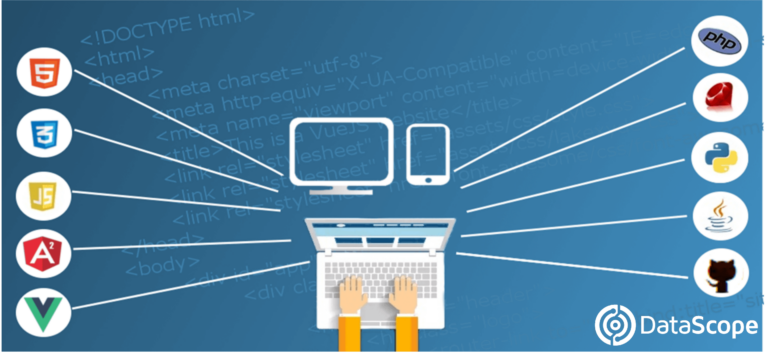The International Standards Organization (ISO) is a non-governmental, membershipbased organization who attempt to “contribute to making the development, manufacturing and supply of products and services more efficient, safer and cleaner”.
The ISO 14000 standard addresses “environmental management”, establishing what an organization has to do to minimize harmful environmental impacts caused by its activities, and what should be done to improve environmental performance.
What is ISO 14000?
ISO 14000 is a set of international standards designed to help organizations to operate without negatively affecting the environment. It is a set of environmental management standards establishes how organizations can integrate environmental considerations into their operations and products. The ISO 14000 standards do not propose environmental targets but provide organizations with the tools to evaluate the impact that their activities, products or services have on the environment to find the better way to minimize these effects
One vital component of the ISO 14000 series of standards is ISO 14001:2015 which specifies the requirements for an effective Environmental Management System (EMS).
This ISO 14001:2015 replaced the ISO 14001:2004. That was an important step forward for a more contemporary standard; one that covers all new environmental challenges, put the focus on sustainable development and want to protect the environment from harm and degradation.
What is an environmental management system EMS?
An Environmental Management System (EMS) is a set of processes designed to help organizations achieve their environmental goals and regulatory standards in a cost-effective manner through consistent review, evaluation, and improvement of its environmental performance.
The EMS itself will not establish the level of environmental performance that has to be achieved, but will help each organization to reach their objectives and targets. An Environmental Management System (EMS) will provide your company a framework through which its environmental performance can be monitored, controlled and improved.
An effective EMS will:
- Define environmental responsibilities for all staff.
- Identify opportunities to reduce waste.
- Reduce the risk of fines for non-compliance with environmental legislation.
- Ensure all operations have procedures to reduce and minimize their environmental impacts.
- Keep a record environmental performance.
The basic elements of an EPS can include the following (as recommended by the US EPA):
- Setting environmental objectives and targets to reduce environmental impacts in compliance with legal requirements.
- Reviewing the organization’s environmental objectives.
- Setting up strategies to meet these objectives and targets.
- Ensuring employees’ environmental awareness and knowledge.
Why implement ISO 14001:2015?
Achieving accredited certification to ISO 14001 certainly delivers commercial value to any organization, including reduced greenhouse gas emissions and streamlined waste management, which, besides the positive impact that have on the environment, are competitive advantages for any business. Therefore, ISO 14001 is commercially good; it is a smart approach for the long-term viability of businesses. The new version (ISO 14001:2015) establishes that is the duty of the organization to commit to proactive initiatives to preserve the environment. This can include issues such as taking measures to prevent pollution, the sustainable use of resources and preserving the local biodiversity and ecosystems. Companies are required to look at their context and identify the effect they have on the environment. This involves taking new factors into account, such as climate volatility, adaptation to change in the environment and resource availability which is a big step forward as the effect of the environment on the organization was not included in the scope of the standard’s previous version.
There are many reasons why an organization should take a strategic approach to improving its environmental performance. Here are some of them:
Enhances environmental performance
The initial benefit of being an ISO 14001 certified business means you have excellent environmental performance and corporate citizenship.
Waste reduction
Controlling and managing waste and emissions are good indicators that your business is preventing any source of pollution and contamination.
Profitability
Being ISO 14001:2015 certified helps companies to get financial benefits, establish better relationships with stakeholders, expand to different markets and improve company reputation. Many businesses with high risk of environmental impact may only deal with organizations that have certified EMS frameworks.
Encourage better environmental performance of suppliers
By integrating them into your organization’s business systems, they will also improve their environmental performance.
Improve company reputation
Customers and media care about environmental issues and what businesses approach and deal with them.
Compliance with legal requirements
Taking a strategic approach helps demonstrate adherence with current and future regulatory and statutory requirements. This also help reduce risk of prosecution and fines.
ISO 14001 requirements
Theses provide a set of standard elements that will guide you in the implementation of an Environmental Management System (EMS). The requirements are designed to be applicable to any organization, regardless of its size, type or location. All elements of the standard are mandatory, but the requirements stipulate the elements of an EMS that need to be covered.However, the standard does not specify how to address those requirements.
The ISO 14001:2015 requirements are separated into 10 sections (called ISO 14001 clauses). The first three clauses describe the standard and clauses four through 10 focus on the requirements for an EMS. We will review the last six below.
Context of the organization
This section explains general requirements for an EMS including understanding the organizational context, the needs and expectations of interested parties, and documentation of the scope of the Environmental Management System.
Leadership
This section identifies the requirement for Top Management to show leadership and commitment to the EMS and identify the organizational roles, responsibilities, and authorities that will participate in that. Leadership also includes the definition of the Environmental Policy that will act as the overall goal of the EMS. This policy must include a commitment to prevent pollution and to comply with all legal requirements to which the company is subject.
Planning
These on emphasizes the need to identify and plan how to address risks and opportunities and how the processes of the organization should interact with the environment. The requirements also address legal requirements and the setting of objectives and planning to achieve them within the EMS.
Support
This largest section addresses requirements on resources in the EMS, including the assessment of competence, training, and EMS awareness. Included in these requirements are how you will control documented information for the EMS as well as internal and external communication that is relevant to your EMS.
Operation
This is a small bus very relevant section because it sets the requirements on how you will plan the control of your operations and how you will prepare to respond to any environmental emergency.
Performance evaluation
This second-largest section points at the ways to monitor, measure, analyze, and evaluate your EMS processes. It includes how you will evaluate compliance with legal requirements. A system of internal audits is required to make sure you audit your system performance to identify problems, make correction and sort issues out. There are also requirements on how management will review the EMS to ensure it is working effectively and improving.
Improvement
The last section deals with requirements for how you will address nonconformity in your EMS processes, corrective actions needed and improvement activities when is necessary. After a while, you should be able to identify a problem before it occurs.
How to get ISO 14001:2015 certified?
The process for certification to the standard starts with the company’s decision to meet the ISO 14001 standard requirements. Those are used as guidelines for implementing solutions that can maintain and review the new system. The initial assessment involves the identification of areas of improvement that can meet requirements and compilation of necessary documents. Once all of the requirements are fulfilled, certified lead auditors will assess the EMS to conclude if it meets ISO 14001 requirements. If it does, the company receives ISO 14001 certification which indicates that its EMS is acceptable. According to the requirements of the certification, the established EMS has to be maintained and improved regularly.
The certification body will leave with an agreement from the business that will continue well after the audit is completed. Routine audits will be checking the process. Each aspect of the system is checked at least once during the 2 years. If at the end of 3 years, the company wishes to maintain its ISO 14001 certification, it will have to undergo another cycle for recertification.
Here are five key steps that organizations typically go through to achieve EMS certification:
Step one: Planning
Any organization who wishes to be ISO certified needs serious planning and preparation to ensure that effort, money and time is not wasted. You must check and review all relevant data and documents.
Step two: Review the ISO 14001:2015 Standard
Get familiar with the entire ISO 14001:2015 certification process. Identify legal requirements and define the EMS scope and procedures.
Step three: Training
Your employees need to know your goals and how they can get involved in the process. Therefore, it is very important to provide training on understanding the ISO standards, developing management systems, dealing with non-conformances, among other issues.
Step four: Perform internal audits
This step is essential to evaluate if the EMS is effective or not. You can use digital ISO 14001 checklists to assist with documenting and tracking the improvement of your processes.
Step five: Get certified
Choose a well-known third-party certification body to assess your EMS process and check if your company comply with the ISO 14001:2015 requirements.




